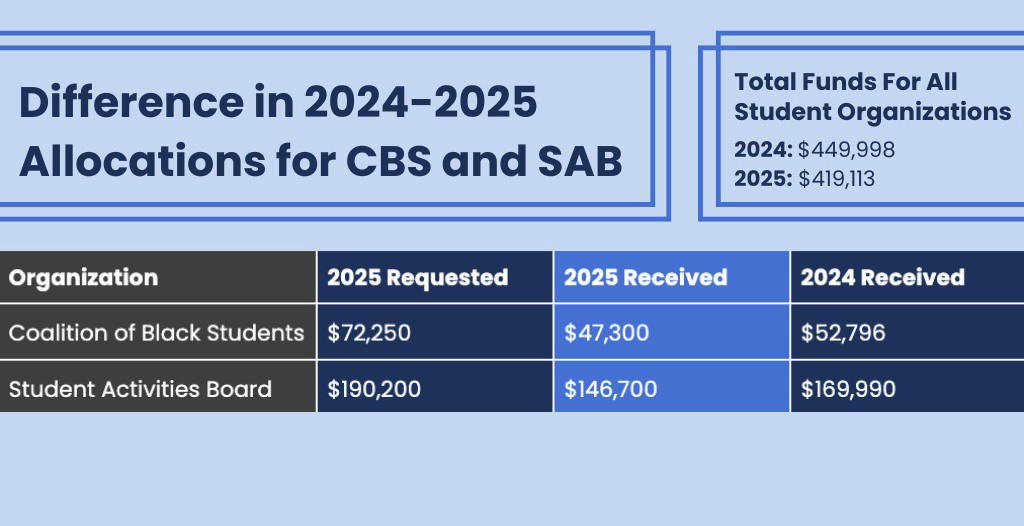America’s economy has been unstable for the past couple of years, thanks to the COVID-19 pandemic. This has caused many economic, social, cultural and political phenomena, one of which is what has been termed the “Great Resignation.”
“It is this mass exodus of workers across the globe. We definitely felt it in the US, and we definitely felt it here in Iowa,” Kara Matheson said. Matheson is the senior director of workforce development for the West Des Moines Chamber of Commerce.
There are many factors that produced the Great Resignation. The most basic is a tight labor market, according to economics professor William Boal, who specializes in labor economics.
“When labor markets are tight — when jobs are plentiful and very few people are being laid off, then people have a choice. They can quit,” Boal said. “So turnover is pretty high as you’d expect, with unemployment being so low and vacancies being quite a bit higher than the unemployment right now. There are more jobs than there are workers looking for jobs, which is unusual.”
Boal said that the Great Resignation is a part of the business cycle and should not last more than a year from now, if it has not already ended.
According to Nate Holdren, associate professor of law, politics and society at Drake, income inequality is a major factor in why workers are quitting. Holdren specializes in the relationship between law, class and capitalism and will be teaching a class titled “Why People Hate Their Jobs” during the Fall 2022 semester as an honors course.
“The gap between good and bad jobs is increasing,” Holdren said. “That’s partly due to flat or declining buying power from the paycheck. Conditions are getting worse in terms of safety and danger, in terms of steady work hours like part time versus full time and in terms of predictable work hours like ‘Am I going to be closing at Starbucks at midnight tonight and then opening tomorrow at six?’ ”
Matheson identified some trends and factors she saw contributing to the phenomenon.
“Some of the different factors that I think contributed to this term being coined were going to happen at some point,” Matheson said. “For example, baby boomers are retiring. When COVID hit, that very much accelerated the pace at which they are retiring. A lot of them retired early. There are a lot of studies that show women, particularly with young children, have left the workplace because of lack of childcare options.”
Matheson also identified a “massive drop” in the workforce participation rate during the pandemic as a key factor in the Great Resignation. The workforce participation rate is the percentage of people aged 16 years old or older who are working or actively searching for work, according to the Bureau of Labor Statistics. According to the St. Louis Federal Reserve Bank, the labor force participation rate sank from 63.4 percent in February 2020 to its lowest point during the pandemic of 60.2 percent in April 2020, and it is now back up to 62.4 percent as of March 2022.
Finally, Matheson points to the flexibility that today’s technology provides and the inflexibility of some employers to adapt as reasons why many quit their jobs. She said that employers should seek to provide flexibility to their employees so that they can be happier and more productive.
Shifting power dynamics between the employer and employee on a macro scale are allowing employees to leave their job more easily than they could have in the past, Holdren said.
“Part of what’s going on with the Great Resignation is that the bottom is continuing and has been falling out slowly but steadily for a lot of people, which means employers have had increasingly unilateral power,” Holdren said. “There’s a sudden kind of upsurge of employers who have been used to being able to give orders. They say jump, employees say, ‘How high?’ [Now, employers are] suddenly being like, ‘Oh, my employees are quitting,’ and that is a real part of the shock for employers. It’s like, ‘Wow, I’m used to just getting my way.’ ”
Holdren said that media coverage of the Great Resignation has been biased toward employers’ points of view and concerns.
“We’re seeing a lot of talk about what it’s like to be an employer whose employees are walking away,” Holdren said. “The dominant narrative right now is not a pro-worker one, not a humanitarian one about what it’s like to be a worker. It’s not a picture that’s most sympathetic to the people who are the lowest on the food chain.”
Boal said that unionization could be a possible solution to workers quitting their jobs en masse.
“It’s pretty well documented that unionized workplaces have lower turnover. So if workplaces become unionized, I would expect that their turnover will go down,” Boal said. “People debate [about why unionized workplaces have less turnover], but one theory is that with a union in place, if they have a real beef with their employer, the union will negotiate on their behalf. A union can do that even when individual workers would worry about getting fired.”







